- News
- Reviews
- Bikes
- Components
- Bar tape & grips
- Bottom brackets
- Brake & gear cables
- Brake & STI levers
- Brake pads & spares
- Brakes
- Cassettes & freewheels
- Chains
- Chainsets & chainrings
- Derailleurs - front
- Derailleurs - rear
- Forks
- Gear levers & shifters
- Groupsets
- Handlebars & extensions
- Headsets
- Hubs
- Inner tubes
- Pedals
- Quick releases & skewers
- Saddles
- Seatposts
- Stems
- Wheels
- Tyres
- Tubeless valves
- Accessories
- Accessories - misc
- Computer mounts
- Bags
- Bar ends
- Bike bags & cases
- Bottle cages
- Bottles
- Cameras
- Car racks
- Child seats
- Computers
- Glasses
- GPS units
- Helmets
- Lights - front
- Lights - rear
- Lights - sets
- Locks
- Mirrors
- Mudguards
- Racks
- Pumps & CO2 inflators
- Puncture kits
- Reflectives
- Smart watches
- Stands and racks
- Trailers
- Clothing
- Health, fitness and nutrition
- Tools and workshop
- Miscellaneous
- Buyers Guides
- Features
- Forum
- Recommends
- Podcast
review
£599.99
VERDICT:
Competent entry-level road bike that belies its weight when it comes to performance
Weight:
10,200g
Contact:
At road.cc every product is thoroughly tested for as long as it takes to get a proper insight into how well it works. Our reviewers are experienced cyclists that we trust to be objective. While we strive to ensure that opinions expressed are backed up by facts, reviews are by their nature an informed opinion, not a definitive verdict. We don't intentionally try to break anything (except locks) but we do try to look for weak points in any design. The overall score is not just an average of the other scores: it reflects both a product's function and value – with value determined by how a product compares with items of similar spec, quality, and price.
What the road.cc scores meanGood scores are more common than bad, because fortunately good products are more common than bad.
- Exceptional
- Excellent
- Very Good
- Good
- Quite good
- Average
- Not so good
- Poor
- Bad
- Appalling
When I first reviewed the Vitus Razor VR back in 2016 I was really impressed with the way it rode and with its versatility. Its stable manners were great for those new to road cycling, and you had the option to fit mudguards to turn it into a sensibly priced, robust winter commuter or trainer. But for 2018 a lot of things have changed: a new frame and fork, for instance, and some welcome upgraded components, but the weight has increased by a noticeable amount. Thankfully, the ride is still as fun.
- Pros: Feels lighter than it is; smooth, balanced handling; decent groupset
- Cons: Heavier than previous models, lacks their mudguard mounts too
Ride
When I picked the Razor up from the office I knew nothing of the changes made to the VR model; as far as I was concerned it was still the same decent value, nippy little road bike, with a shiny new chainset to bring it up to date and a new paint job.
That was exactly how it rode. It defied its weight, felt pretty quick on the climbs and handled with confidence through flowing bends.
In total, the bike has increased by 600g but the geometry has become shorter and more aggressive, which counters the weight gain. Pick the Vitus up and you might be surprised by its heft, but ride it and it feels nothing like it, even when taking in the hills (as long as things don't get too steep).
Riding away from road.cc HQ in the centre of Bath towards my place requires a number of characteristics of a bike. The city is pretty flat, but with lots of cars, buses and lorries all fighting their way to the next set of lights or traffic jam you need a bike that'll change pace pretty well to maintain your position in the flow; one that can cope with the stop/start nature of the roads.
While the Razor isn't the quickest from a standing start, as long as you keep a bit of momentum going it's surprisingly nippy. A quick stamp on the pedals will see you dart through a gap or make the 'amber gamble' at the lights.
No matter which way you leave the chaos behind, though, you're going to need to climb and you've got a choice: long and steep or even longer and a little less intense. I generally choose the latter, and doing so revealed the Vitus's impressive ability to ascend.
You get a compact chainset with 50/34 chainrings and an 11-28 tooth cassette spread over nine sprockets, which helps, but it isn't anywhere near as low as that found on other bikes at this price point aimed primarily at those new to the sport.
> The road.cc A-Z of cycling jargon
You'll start to notice its weight if you are on a particularly hilly route, especially if the climbs are short, sharp and punchy and the ride goes on for a few hours, but on the whole the Vitus does well.
It's easy to tap out a rhythm in the saddle – and out of it for that matter. I mentioned in my review of the 2016 model that it could suffer a bit of flex around the bottom bracket area, but this is much improved on this version.
When it comes to descending, the Razor VR has a very smooth style considering that its angles are more akin to those of a race bike than the mix of endurance and speed that the Razor is aimed at. The front end has a head angle of 73 degrees while the seat tube is set at 74 degrees.
It flows nicely through the bends, too. It's not the sharpest handling of bikes, but its weight gives it a planted feeling, inspiring confidence and allowing you to push things a little through the twisty sections.
You get plenty of feedback so you know full well when you are getting near the bike's limits, and it's easy to bring back into line by way of a shift in body position or dab of the brakes.
Overall, the Razor VR is still a fun bike to ride and very easy to live with.
Frame and fork
Apart from the effective top tube length of 545mm and the head tube angle, pretty much everything has changed on the Razor's medium frame for 2018.
The seat tube has increased by 40mm which means you aren't running as much seatpost as before, but it hasn't made much difference to overall comfort.
The head tube has increased by a couple of millimetres too.
Overall it's around 8mm shorter at the wheelbase, with the chainstays shrunk by 15mm.
This has created a much quicker handling bike, which is why the Vitus is still quite exciting to ride, especially when you consider those steep angles at the head and seat tube.
One thing that seems a bit of a shame is that Vitus has dropped the Razor's ability to take a full set of mudguards. Okay, not everyone wants the option to fit them, but I thought it was a big bonus to the 2016 model. With its handling and riding style, the Razor wasn't just a bike for beginners, it was totally suitable for experienced riders for winter and year-round commuting. That's now gone.
That aside, though, the 2018 Razor is a very well-built package. The frame is comfortable and you don't get any of that aluminium alloy harshness from the ride. It's firm, yes, but you won't feel your fillings being rattled on a rough road surface.
The welding is neat enough for this price point, and it's covered by what is a hardwearing and thick paint job.
The fork is one place to see an upgrade, with a move to a carbon fibre steerer over the alloy one found on earlier versions, which will reduce some weight overall. It is stiff, too, and I never felt any issues with it under braking or relatively high speed cornering.
Groupset
For the money it's good to see a near-full Shimano Sora 3500 groupset fitted to the Razor VR. Previous models saw a mix of kit including a slightly out of date FC-345 chainset and matching Octalink bottom bracket, the type of thing you found on 105-equipped bikes back at the turn of the century.
The new Sora crankset mimics that of Tiagra and the outgoing 105 (5800) and provides a stiff platform for front end shifting. Its black finish also makes it look bang up to date and matches the Razor's paint finish.
Shimano's lower end groupsets offer great value for money, taking all of their design and function from those higher up the food chain. The Sora shifters are the same shape as Tiagra with the added bonus of the fully hidden cables that run under your bar tape for a clean look.
Shifting is crisp and untroubled with gear changes under load; in fact the only thing you are really missing from the higher groups are the amount of gears, with Sora being 9-speed compared with Tiagra's 10 and 105's 11.
Braking shifts away from Sora, with Tektro callipers. They do a decent job of slowing the bike down, even if they aren't the most prolific of stoppers in an emergency situation. I often criticise brakes on bikes at this price but the Tektros do a decent enough job without being exceptional.
Finishing kit
One of the components Vitus has changed are the wheels, going from its own-brand rims and hubs to Jalco hoops and KT hubs. This looks and feels to be the main contributor to the added weight. They are decent enough wheels and are solid against a good knock, staying true throughout the test period. They roll smoothly enough too.
For the tyres Vitus has gone for Continental's Ultra Sport IIs in a 28mm width, a decent choice at this money. The Contis offer plenty of grip in both the wet and dry and they roll quickly too. The test period has been a dry one but from plenty of previous experience if you use them year-round you'll find that puncture protection is good as well.
The handlebar, stem and seatpost are all Vitus branded affairs and they do the job without being anything to get excited about.
The bar and stem combo offer plenty of stiffness and, being a compact shape, the handlebar gives a variety of options for where to put your hands while still being able to reach the brake and gear levers.
I got on very well with the saddle, too, a Vitus branded model. It's very supportive while being comfortable without the slightest bit of squishiness.
Value
Delivering a well-specced package for £599.99 is a tough job and there will always be compromises. The Razor VR is no exception. Thankfully, at its heart is a decent frameset – better than the previous models and also quite upgradable. Some lighter wheels, for instance, would make a real difference to the overall feel of the bike.
Specialized's Allez is a tough competitor, and for the same money as the VR you can buy the Claris model which I'm currently testing – and boy, what a frame it has.
The new fork, after the recall, may not be able to take mudguards like the original (although the US model seems to) but it offers one hell of a ride. You even get neat little details like internal cable routing.
With Claris you are dropping a sprocket without any drop in shifting performance, but if you want the Sora option you'll need to lay out £799, which also gets you a Praxis chainset.
> Buyer's Guide: 17 of the best £500-£750 road bikes
Giant's well-respected Contend 2 will set you back £575 and that again comes with Claris, so on the whole the Vitus does offer a decent spec for the money.
Conclusion
I really liked the versatility of the 2016 Razor VR, with its mudguard fitment and excellent balance of speed versus stability, and for 2018 the new model is still a very fun bike to ride. Its sportier geometry has offset the increase in weight to keep it a bike that is both enjoyable and easy to ride, if slightly less versatile.
Verdict
A competent entry-level road bike that belies its weight when it comes to performance
road.cc test report
Make and model: Vitus Razor VR
Size tested: 54cm
About the bike
State the frame and fork material and method of construction. List the components used to build up the bike.
Frame AL6061 alloy
Forks Carbon
Shock N/A
Chainset Shimano Sora
Bottom Bracket Shimano
Shifters Shimano Sora
Front Derailleur Shimano Sora
Rear Derailleur Shimano Sora
Cassette Shimano HG300
Chain KMC HG-53
Rims JALCO
Front Hub KT
Rear Hub KT
Spokes Double butted
Tyres Conti Ultrasport II 28c
Front Brake Alloy caliper
Rear Brake Alloy caliper
Handlebars Vitus alloy
Stem Vitus alloy
Headset NECO
Saddle Vitus
Seatpost Vitus alloy
Seatclamp Alloy
Tell us what the bike is for
Vitus says, "The Razor is your perfect first time road bike, or maybe the bike welcoming you back to the open road. It's comfortable, capable and ready to take you further and faster than you might expect.
"The frame has been designed around geometry that sits between race and endurance riding, giving you the perfect taste of the open road. Paired with the full carbon fork this bike punches well above its weight. The 6061 alloy frame features lightweight double butted tubing, meaning the tubes are thinner in the middle for lightweight and comfort, and thicker profiles at the welds for strength and durability.
"Featuring a reliable Shimano Sora drivetrain and controls that use the same proven ergonomics and technology seen on our top of the range models.
"We've built the Razor range with the aim of providing a superb riding experience in a wallet friendly package. The Razor is ready to welcome you to the buzz of road cycling."
Frame and fork
Overall rating for frame and fork
8/10
Tell us about the build quality and finish of the frame and fork?
It all looks to be a solid build, finished off with a robust paint job.
Tell us about the materials used in the frame and fork?
The frame is manufactured from 6061-T6 aluminium alloy while the fork is a full carbon fibre job.
Tell us about the geometry of the frame and fork?
The Razor VR sits somewhere between that of a race and endurance bike, which gives reasonably quick handling without being twitchy.
How was the bike in terms of height and reach? How did it compare to other bikes of the same stated size?
For a bike designed to sit in between race and endurance the geometry is spot on, with a stack of 556.4mm and a reach of 385.5mm.
Full geo details are here: http://vitusbikes.com/products/razor-vr-2018/
Riding the bike
Was the bike comfortable to ride? Tell us how you felt about the ride quality.
The frame and fork aren't harsh at all and it offers a decent ride, helped by the 28mm tyres.
Did the bike feel stiff in the right places? Did any part of the bike feel too stiff or too flexible?
Bottom bracket stiffness felt pretty good, as did it at the front end.
How did the bike transfer power? Did it feel efficient?
Considering the weight, yes it did.
Was there any toe-clip overlap with the front wheel? If so
No.
How would you describe the steering? Was it lively Neutral but still exciting enough for more experienced riders.
Tell us some more about the handling. How did the bike feel overall? Did it do particular things well or badly?
The Razor is a very easy bike to ride. The handling is nicely balanced with a smooth turn in to the bends. Demon descenders might miss the sharpness, but for the riders the bike is aimed at I'd say it's very capable.
Which components had the most effect (good or bad) on the bike's comfort? would you recommend any changes?
The saddle is impressive for the money, as are the tyres.
Which components had the most effect (good or bad) on the bike's stiffness? would you recommend any changes?
The bar and stem combo offer decent stiffness for out-of-the-saddle efforts.
Which components had the most effect (good or bad) on the bike's efficiency? would you recommend any changes?
The tyres roll well but lighter wheels will transform the ride.
Rate the bike for efficiency of power transfer:
7/10
Rate the bike for acceleration:
7/10
Rate the bike for sprinting:
7/10
Rate the bike for high speed stability:
8/10
Rate the bike for cruising speed stability:
8/10
Rate the bike for low speed stability:
8/10
Rate the bike for flat cornering:
8/10
Rate the bike for cornering on descents:
8/10
Rate the bike for climbing:
8/10
The drivetrain
Rate the drivetrain for performance:
8/10
Rate the drivetrain for durability:
8/10
Rate the drivetrain for weight:
7/10
Rate the drivetrain for value:
7/10
Tell us some more about the drivetrain. Anything you particularly did or didn't like? Any components which didn't work well together?
Shimano Sora is a really good groupset. You can't knock the shifting and its ergonomics match that of the higher groupsets for very little outlay.
Wheels and tyres
Rate the wheels for performance:
6/10
Rate the wheels for durability:
8/10
Rate the wheels for weight:
6/10
Rate the wheels for comfort:
7/10
Rate the wheels for value:
6/10
Tell us some more about the wheels.Did they work well in the conditions you encountered? Would you change the wheels? If so
This frame is crying out for some lighter wheels but the ones you get are solid performers. I'd change them for something lighter, especially for the summer months.
Rate the tyres for performance:
8/10
Rate the tyres for durability:
7/10
Rate the tyres for weight:
7/10
Rate the tyres for comfort:
7/10
Rate the tyres for value:
7/10
Tell us some more about the tyres. Did they work well in the conditions you encountered? Would you change the tyres? If so
Continental's Ultra Sport II tyres are great perfromers for the price. Not the fastest, best gripping or cheapest, but as a package they are hard to knock.
Controls
Rate the controls for performance:
7/10
Rate the controls for durability:
8/10
Rate the controls for weight:
7/10
Rate the controls for comfort:
7/10
Rate the controls for value:
7/10
Tell us some more about the controls. Any particularly good or bad components? How would the controls work for larger or smaller riders?
Kit is exactly as you'd expect on a bike of this price. No real need to upgrade but you could probably drop a few grams if you wanted to. The compact handlebar works well for riders of all shapes and sizes, with plenty of hand position options relative to the brake levers.
Your summary
Did you enjoy riding the bike? Yes
Would you consider buying the bike? Yes
Would you recommend the bike to a friend? Yes
Rate the bike overall for performance:
8/10
Rate the bike overall for value:
7/10
Use this box to explain your overall score
The Razor VR may have lost its versatility but it hasn't lost its fun factor. A solid model to the entry-level market with a decent spec list for the money.
About the tester
Age: 40
I usually ride: This month's test bike My best bike is:
I've been riding for: Over 20 years I ride: Every day I would class myself as: Expert
I regularly do the following types of riding: time trialling, commuting, club rides, sportives, fixed/singlespeed
Since writing his first bike review for road.cc back in early 2009 senior product reviewer Stu has tested more than a thousand pieces of kit, and hundreds of bikes.
With an HND in mechanical engineering and previous roles as a CNC programmer/machinist, draughtsman and development engineer (working in new product design) Stu understands what it takes to bring a product to market. A mix of that knowledge combined with his love of road and gravel cycling puts him in the ideal position to put the latest kit through its paces.
He first made the switch to road cycling in 1999, primarily for fitness, but it didn’t take long for his competitive side to take over which led to around ten years as a time triallist and some pretty decent results. These days though riding is more about escapism, keeping the weight off and just enjoying the fact that he gets to ride the latest technology as part of his day job.
Latest Comments
- NoOneSpecial 2 sec ago
They used to, it's now 35% of ownership....
- chrisonabike 47 min 22 sec ago
Does the "super-loud yellow" also help alert (non-deaf / non-earbud-wearing) pedestrians? Or will it just mean dogs bark at me?
- Festus 1 hour 37 min ago
One thing that bothers me is the use of antidepressant med and driving, it never gets picked up by police. Most of these types of medicines state...
- Mr Blackbird 2 hours 3 min ago
Possibly, but I think there will still be a time delay between receiving a warning and looking and the brain processing the image.I guess cycling...
- chrisonabike 3 hours 37 min ago
Indeed - but again these are perhaps questions we should keep asking. Even if the immediate answer is "well we are where we are" or "how on earth...
- wtjs 5 hours 25 min ago
Then smash bad driving behaviour very hard...
- David9694 10 hours 2 min ago
Calls for Oxfordshire transport chief to resign blocked...
































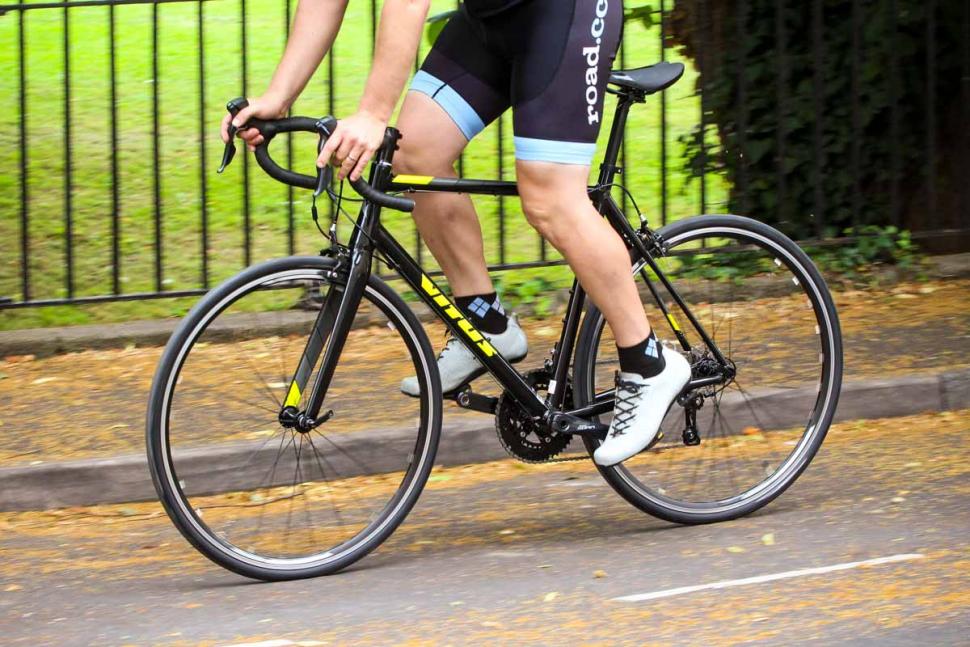
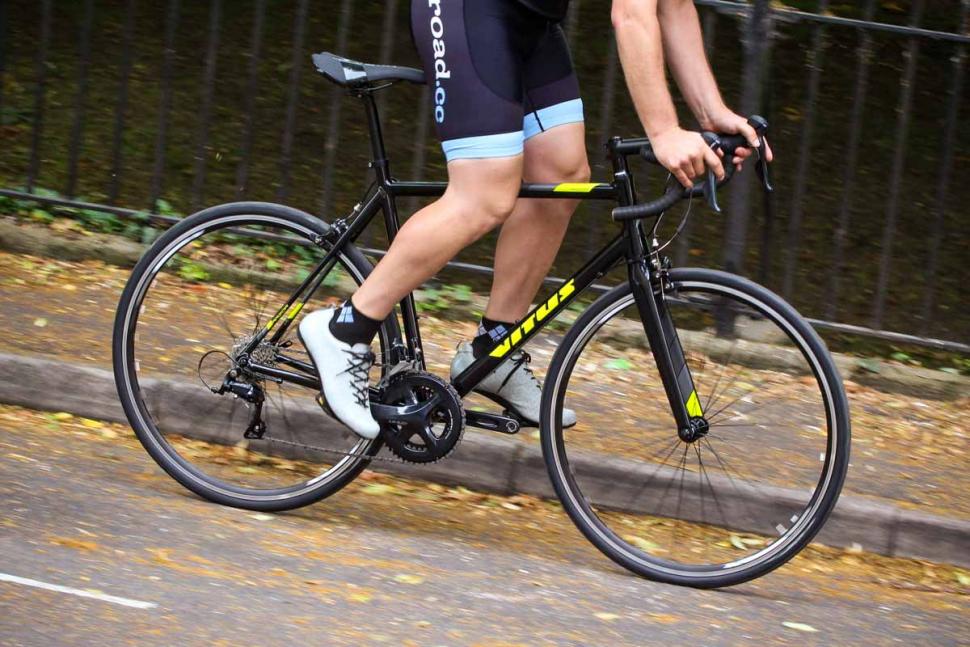
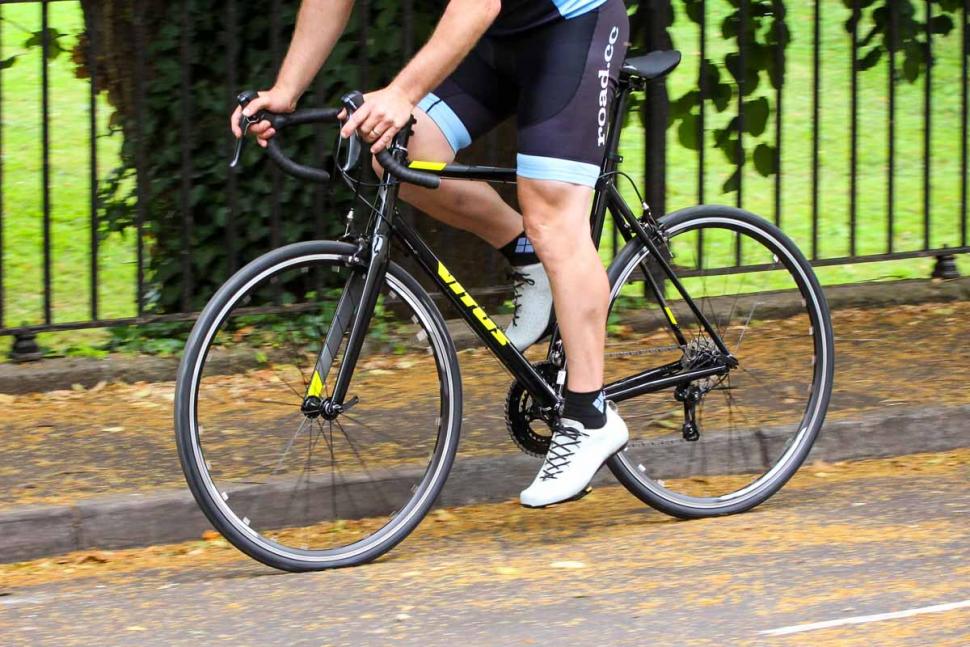


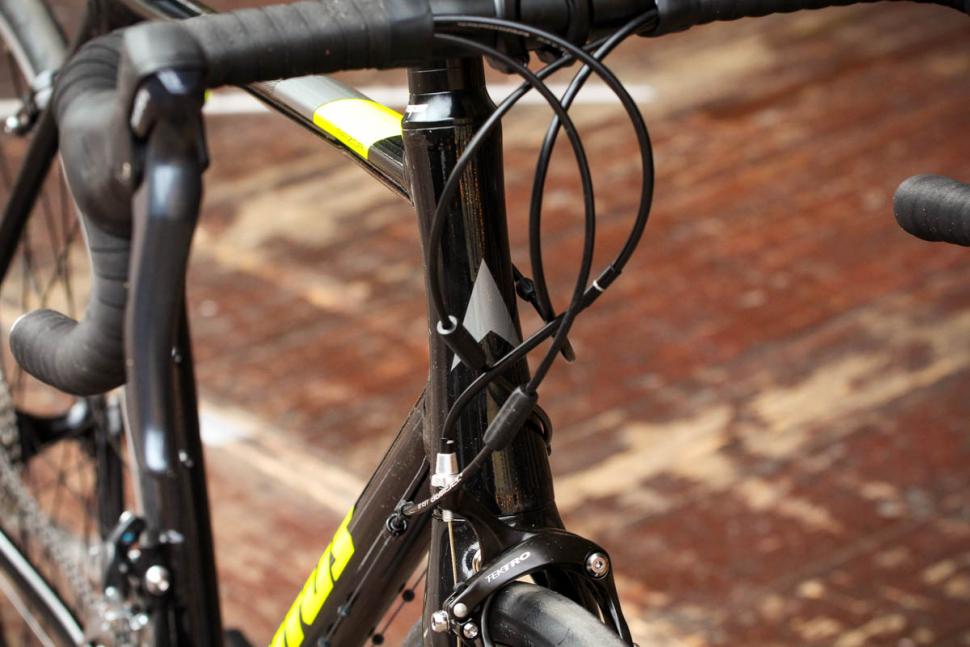
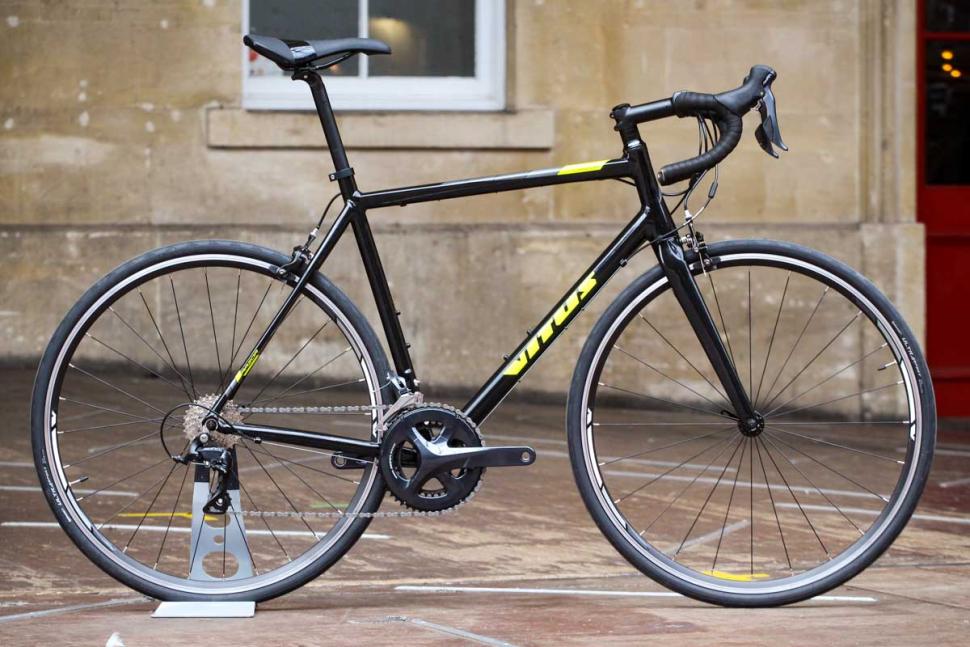
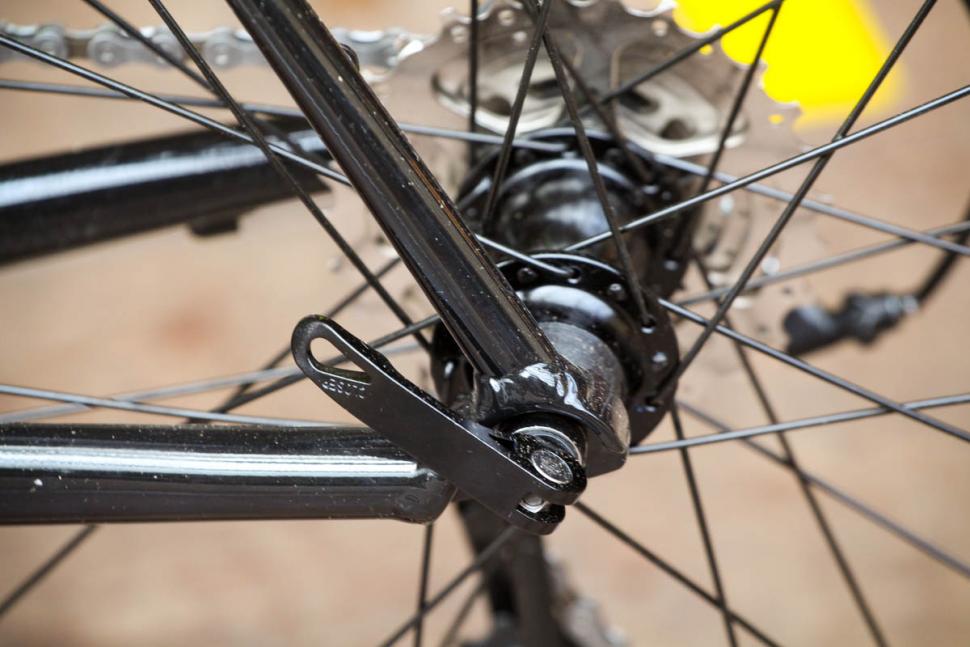

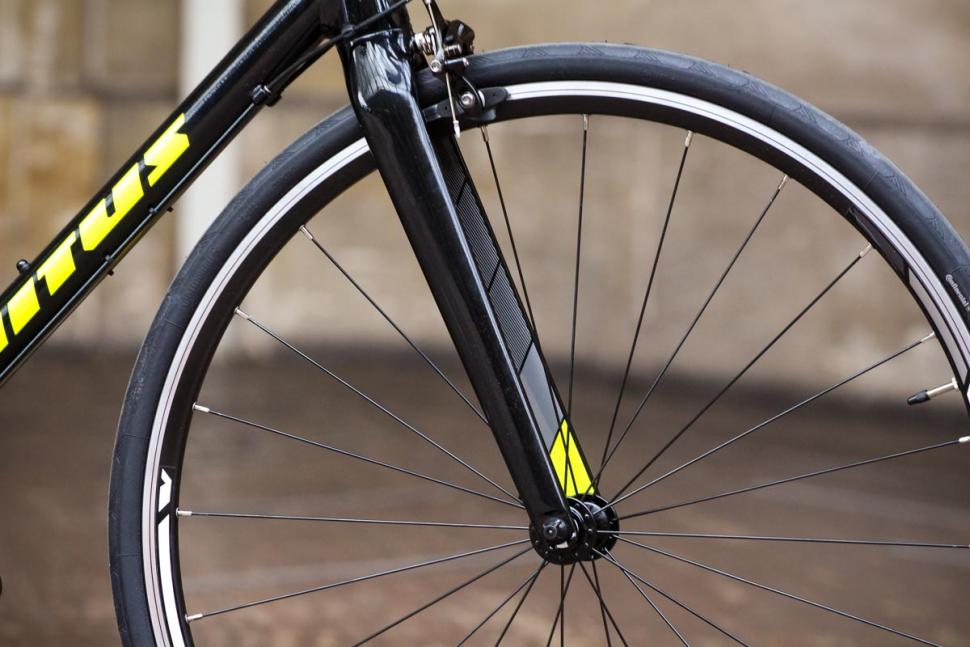

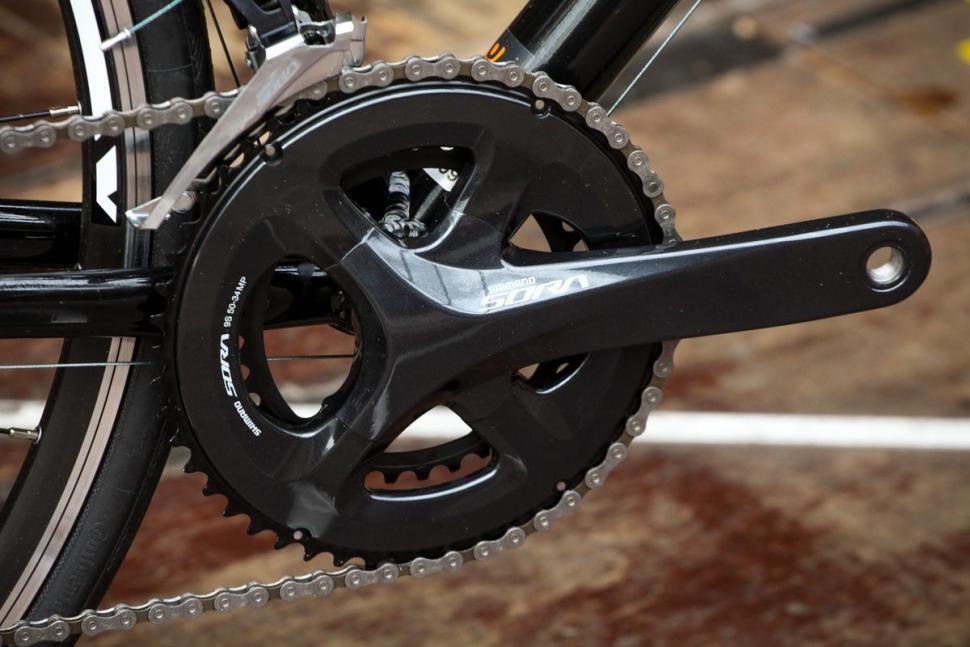

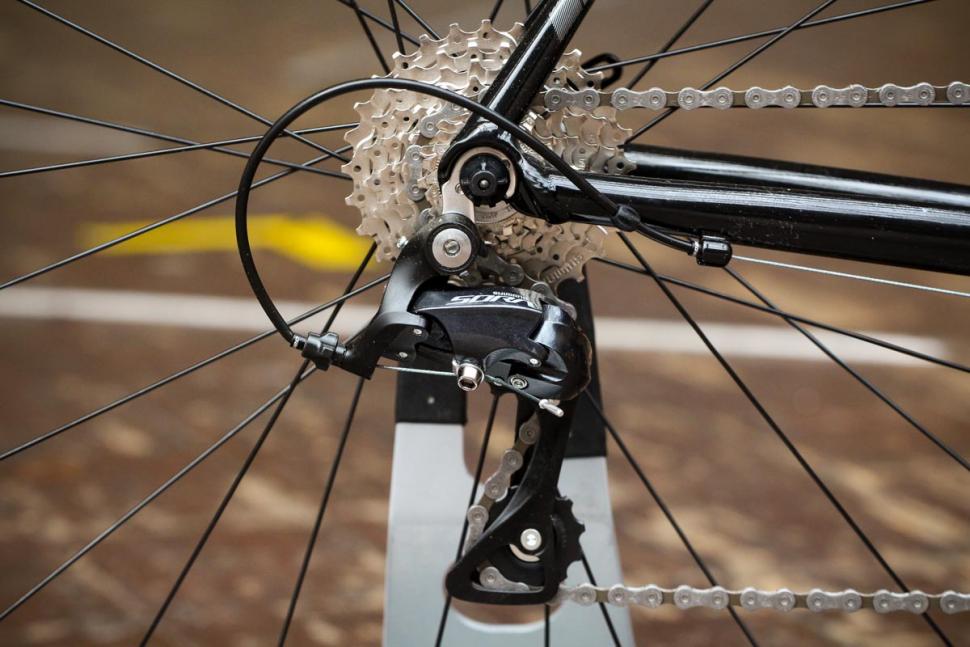
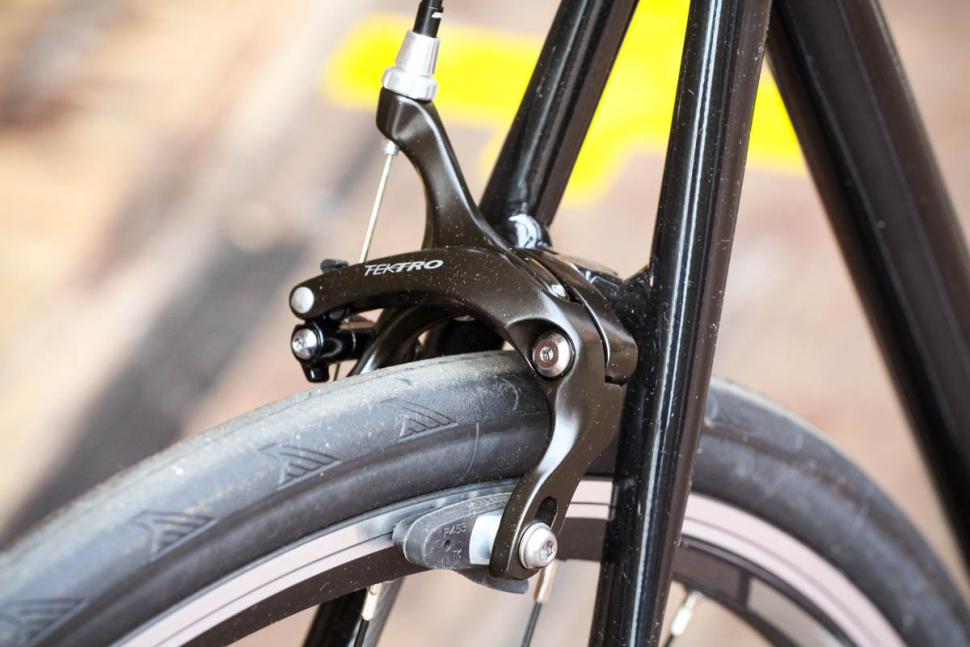
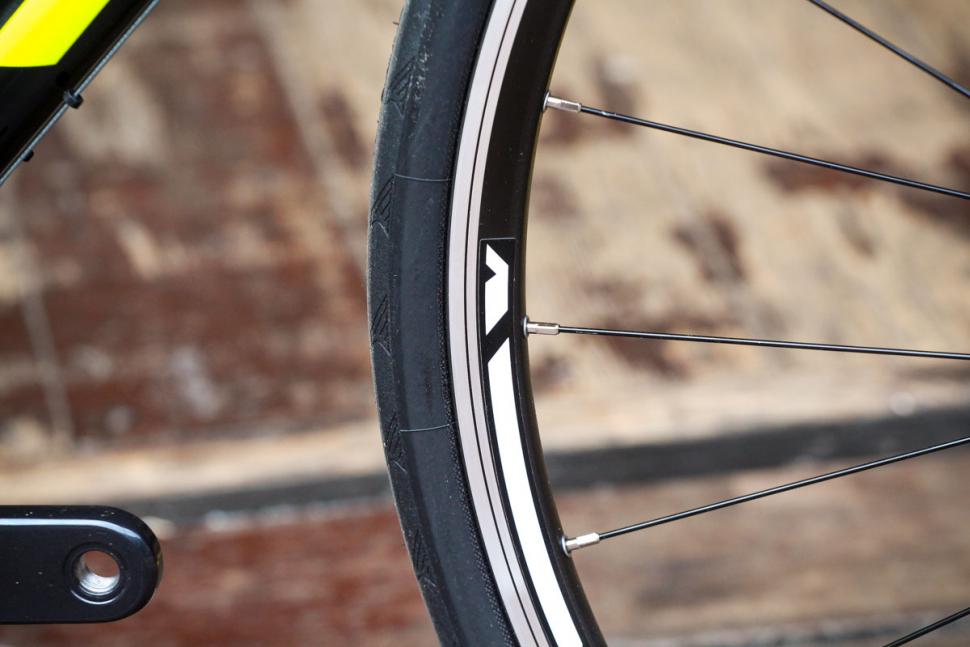
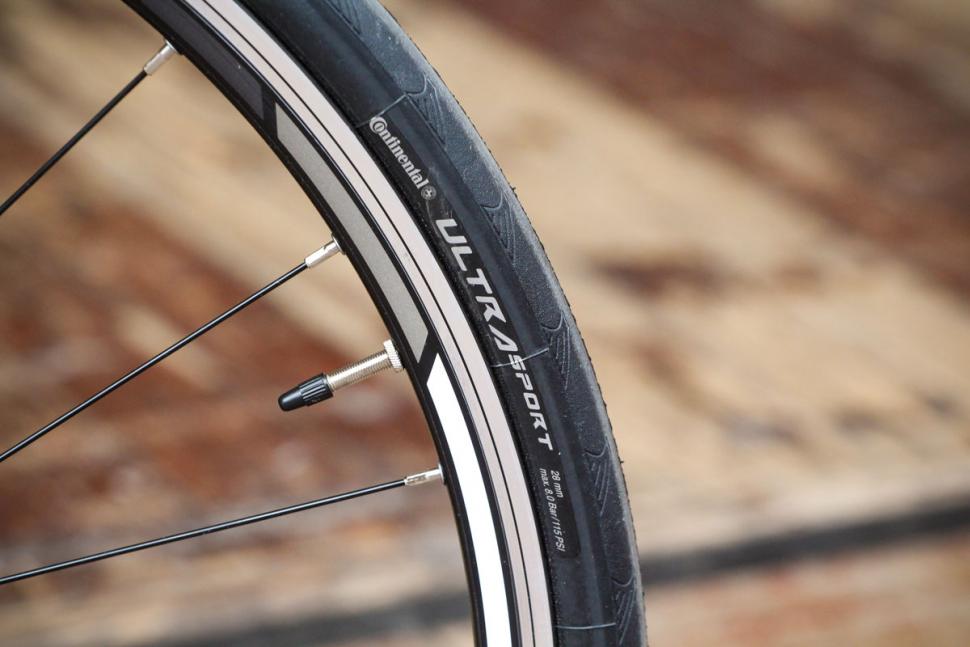

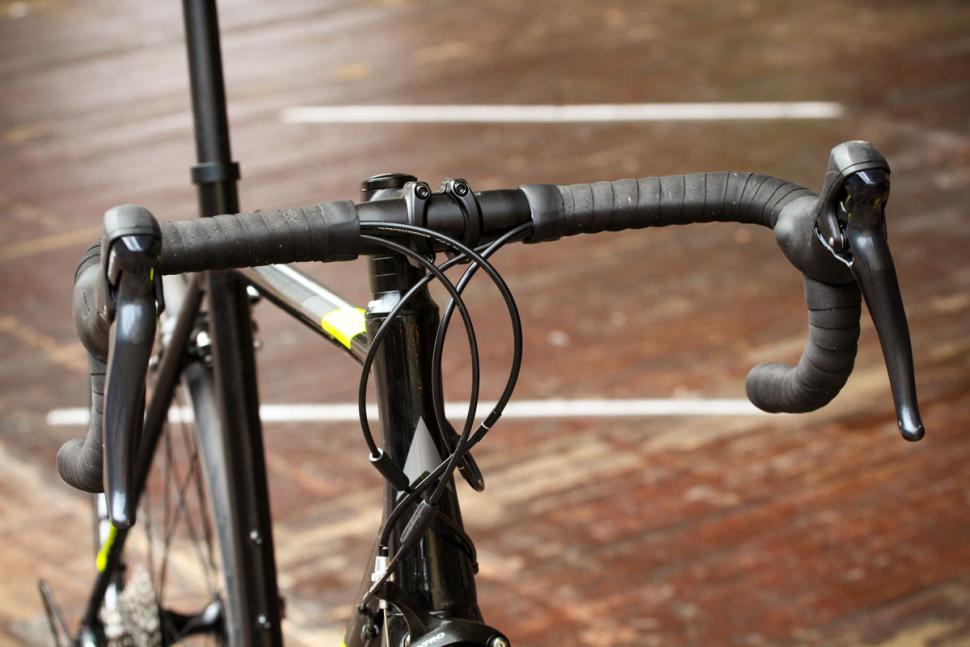
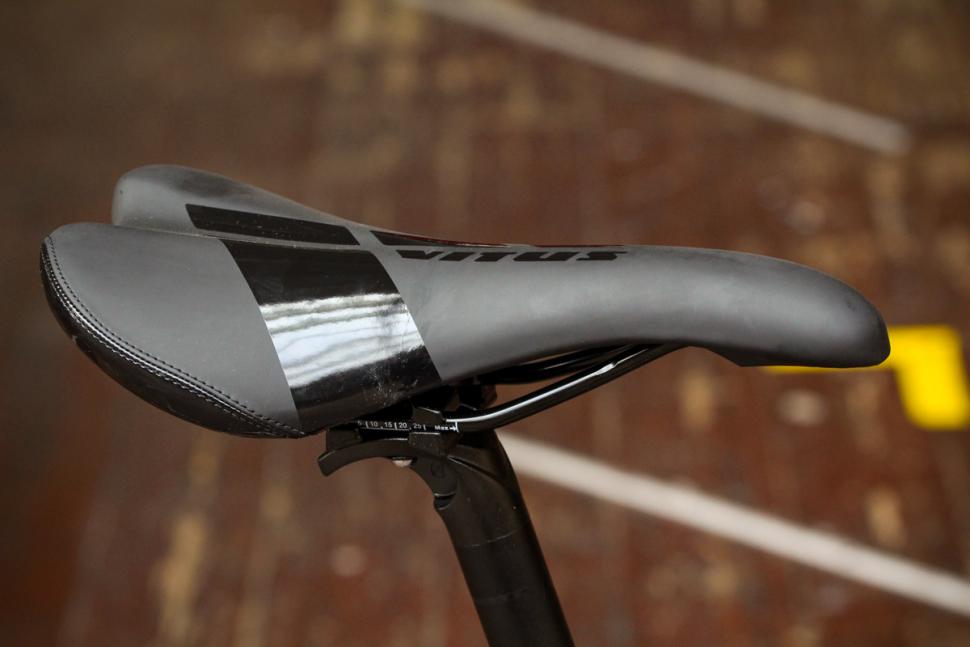




Add new comment
3 comments
I had the 2016/17 VR as my first proper bike and really like it, scored it in a black friday sale for about £340, which is really just outrageous value compared to anything else at the pricepoint.
This looks to be a solid iteration on the original, certainly seeing the Sora crankset on there is a definite bonus. The one big hit is the mudguard eyelets. This was a great choice for a fast winter bike and the mudguards really helped its versatility.
One thing to note is that I'm not riding my VR at the moment because the freehub seems to be completely knackered and I can't quite justify spending either £150 on a pair of heavy/bad wheels or £300 on decent wheels for a bike that'll mostly see bad weather riding. I hope the new hubs are more reliable.
You could pick up a new Sora rear hub for £20 and rebuild the wheel. It's straighforward enough - loads of online guides - and very satisfying.
Or even ask your LBS if they have any knackered old wheels (with decent hubs) for you to practice on.
I'm not quite sure what it is, but I don't think Black with Yellow graphics works on a road bike. I used to have a bike with a similar colourway, bought purely on price and need, and though it rode perfectly well, I just never grew to like it because of the colours.
And my current bike I preferred to buy a model with the same carbon frame but lower groupset and upgrade the components instead of going down the probably cheaper route of getting the heigher spec version and making fewer changes. Why? becuase the higher spec was matt black with yellow detailing, and again, it didn't look anything like as nice as the matt black with subtle blue detailing.
It's funny, because I have a black and yellow MTB and I think it looks OK.
Strange! (or may I'm strange?).